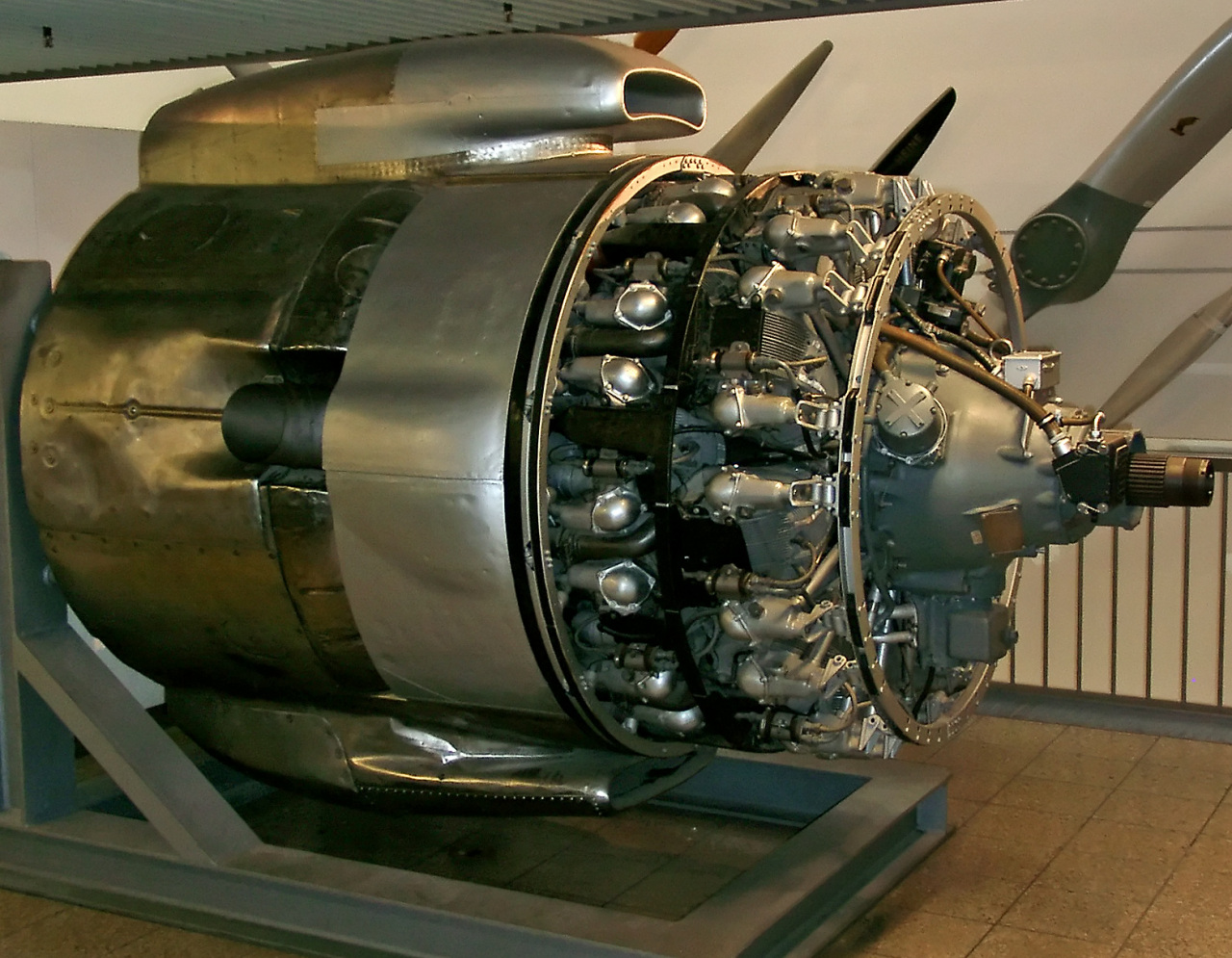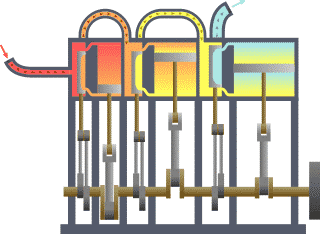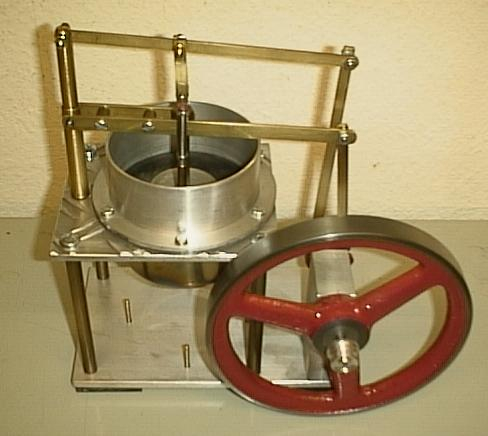|
Musgrave Non-dead-centre Engine
Musgrave's ''non-dead-centre'' engine was a stationary steam engine of unusual design, intended to solve the problem of stopping on Dead centre (engineering), dead centre. It was designed in 1887 to serve as a Marine steam engine, marine engine. It used a pair of linked cylinders to prevent the engine from stopping in a position where no turning force can be applied. At least one engine is known to survive. Dead centres The 'Dead centre (engineering), dead centre' of a piston engine with Crank (mechanism), cranks is when the piston is at the ''exact'' top or bottom of the stroke and so the piston cannot exert any torque on the crankshaft. If a stationary steam engine, steam engine stops on dead centre, it will be unable to restart from that position. Several solutions to this have been applied. One of the simplest is to try not to stop in this position, the crudest to apply a strong arm with a crowbar to turn the engine over a little. Small steam barring engines were also used t ... [...More Info...] [...Related Items...] OR: [Wikipedia] [Google] [Baidu] |
Crosshead
In mechanical engineering, a crosshead is a mechanical joint used as part of the slider-crank linkages of long stroke reciprocating engines (either internal combustion or steam) and reciprocating compressors to eliminate sideways force on the piston. The crosshead also allows the connecting rod to move freely outside the cylinder. Because of the very small bore-to-stroke ratio on such engines, the connecting rod would hit the cylinder walls and block the engine from rotating if the piston were attached directly to the connecting rod as in a trunk engine. Therefore, the longitudinal dimension of the crosshead must be matched to the stroke of the engine. Overview On smaller engines, the connecting rod links the piston and the crankshaft directly, but this transmits sideways forces to the piston, since the crankpin (and thus the direction the force is applied) moves from side to side with the rotary motion of the crank. These transverse forces are tolerable in a relatively smal ... [...More Info...] [...Related Items...] OR: [Wikipedia] [Google] [Baidu] |
Corliss Steam Engine
A Corliss steam engine (or Corliss engine) is a steam engine, fitted with rotary valves and with variable valve timing patented in 1849, invented by and named after the US engineer George Henry Corliss of Providence, Rhode Island. Corliss assumed the original invention from Frederick Ellsworth Sickels (1819- 1895), who held the patent (1829) in the US patent office. Engines fitted with Corliss valve gear offered the best thermal efficiency of any type of stationary steam engine until the refinement of the uniflow steam engine and steam turbine in the 20th century. Corliss engines were generally about 30 percent more fuel efficient than conventional steam engines with fixed cutoff. This increased efficiency made steam power more economical than water power, allowing industrial development away from millponds. Corliss engines were typically used as stationary engines to provide mechanical power to line shafting in factories and mills and to drive dynamos to generate electricit ... [...More Info...] [...Related Items...] OR: [Wikipedia] [Google] [Baidu] |
Park Street Mill
A park is an area of natural, semi-natural or planted space set aside for human enjoyment and recreation or for the protection of wildlife or natural habitats. Urban parks are green spaces set aside for recreation inside towns and cities. National parks and country parks are green spaces used for recreation in the countryside. State parks and provincial parks are administered by sub-national government states and agencies. Parks may consist of grassy areas, rocks, soil and trees, but may also contain buildings and other artifacts such as monuments, fountains or playground structures. Many parks have fields for playing sports such as baseball and football, and paved areas for games such as basketball. Many parks have trails for walking, biking and other activities. Some parks are built adjacent to bodies of water or watercourses and may comprise a beach or boat dock area. Urban parks often have benches for sitting and may contain picnic tables and barbecue grills. The largest ... [...More Info...] [...Related Items...] OR: [Wikipedia] [Google] [Baidu] |
Compound Engine
A compound engine is an engine that has more than one stage for recovering energy from the same working fluid, with the exhaust from the first stage passing through the second stage, and in some cases then on to another subsequent stage or even stages. Originally invented as a means of making steam engines more efficient, the compounding of engines by use of several stages has also been used on internal combustion engines and continues to have niche markets there. The stages of a compound engine may be either of differing or of similar technologies, for example: * In a turbo-compound engine, the exhaust gas from the cylinders passes through a turbine, the two stages being dissimilar. * In a compound steam locomotive, the steam passes from the high-pressure cylinder or cylinders to the low-pressure cylinder or cylinders, the two stages being similar. * In a triple-expansion steam engine, the steam passes through three successive cylinders of increasing size and decreasing press ... [...More Info...] [...Related Items...] OR: [Wikipedia] [Google] [Baidu] |
Compound Steam Engine
A compound steam engine unit is a type of steam engine where steam is expanded in two or more stages. A typical arrangement for a compound engine is that the steam is first expanded in a high-pressure (HP) cylinder, then having given up heat and losing pressure, it exhausts directly into one or more larger-volume low-pressure (LP) cylinders. Multiple-expansion engines employ additional cylinders, of progressively lower pressure, to extract further energy from the steam. Invented in 1781, this technique was first employed on a Cornish beam engine in 1804. Around 1850, compound engines were first introduced into Lancashire textile mills. Compound systems There are many compound systems and configurations, but there are two basic types, according to how HP and LP piston strokes are phased and hence whether the HP exhaust is able to pass directly from HP to LP ( Woolf compounds) or whether pressure fluctuation necessitates an intermediate "buffer" space in the form of a steam c ... [...More Info...] [...Related Items...] OR: [Wikipedia] [Google] [Baidu] |
Model Engineer Magazine
A model is an informative representation of an object, person, or system. The term originally denoted the plans of a building in late 16th-century English, and derived via French and Italian ultimately from Latin , . Models can be divided into physical models (e.g. a ship model or a fashion model) and abstract models (e.g. a set of mathematical equations describing the workings of the atmosphere for the purpose of weather forecasting). Abstract or conceptual models are central to philosophy of science. In scholarly research and applied science, a model should not be confused with a theory: while a model seeks only to represent reality with the purpose of better understanding or predicting the world, a theory is more ambitious in that it claims to be an explanation of reality. Types of model ''Model'' in specific contexts As a noun, ''model'' has specific meanings in certain fields, derived from its original meaning of "structural design or layout": * Model (art), a perso ... [...More Info...] [...Related Items...] OR: [Wikipedia] [Google] [Baidu] |
John Musgrave & Sons
John Musgrave & Sons was a company that manufactured stationary steam engines. It was founded in 1839 by John Musgrave and his son, Joseph, at the Globe Ironworks, in Bolton, historically in Lancashire, England. In 1854 the company supplied a twin cylinder horizontal winding engine, and in 1861 a single cylinder pumping engine to Chanters Colliery in Hindsford. Musgraves supplied winding engines to Wheatsheaf Colliery in 1868, Mosley Common Colliery in 1870, Brackley Colliery in 1879, Gin Pit Colliery in 1884, and Nook Colliery in 1913. The company produced steam engines during the 19th century and between 1899 and 1908 produced 504 large steam-driven engines. The company produced engines and equipment for the coal mining industry and built a boilerworks in Westhoughton in 1900 to produce Lancashire boilers. The Westhoughton works were subject to a chancery court judgement and sold in 1912 leading to the formation of John Musgrave and Sons (1913) Ltd. which kept the Globe Iro ... [...More Info...] [...Related Items...] OR: [Wikipedia] [Google] [Baidu] |
Marine Steam Engine
A marine steam engine is a steam engine that is used to power a ship or boat. This article deals mainly with marine steam engines of the reciprocating type, which were in use from the inception of the steamboat in the early 19th century to their last years of large-scale manufacture during World War II. Reciprocating steam engines were progressively replaced in marine applications during the 20th century by steam turbines and marine diesel engines. History The first commercially successful steam engine was developed by Thomas Newcomen in 1712. The steam engine improvements brought forth by James Watt in the later half of the 18th century greatly improved steam engine efficiency and allowed more compact engine arrangements. Successful adaptation of the steam engine to marine applications in England would have to wait until almost a century after Newcomen, when Scottish engineer William Symington built the world's "first practical steamboat", the '' Charlotte Dundas'', in 1802. ... [...More Info...] [...Related Items...] OR: [Wikipedia] [Google] [Baidu] |
Glasgow
Glasgow is the Cities of Scotland, most populous city in Scotland, located on the banks of the River Clyde in Strathclyde, west central Scotland. It is the List of cities in the United Kingdom, third-most-populous city in the United Kingdom and the 27th-most-populous city in Europe, and comprises Wards of Glasgow, 23 wards which represent the areas of the city within Glasgow City Council. Glasgow is a leading city in Scotland for finance, shopping, industry, culture and fashion, and was commonly referred to as the "second city of the British Empire" for much of the Victorian era, Victorian and Edwardian eras. In , it had an estimated population as a defined locality of . More than 1,000,000 people live in the Greater Glasgow contiguous urban area, while the wider Glasgow City Region is home to more than 1,800,000 people (its defined functional urban area total was almost the same in 2020), around a third of Scotland's population. The city has a population density of 3,562 p ... [...More Info...] [...Related Items...] OR: [Wikipedia] [Google] [Baidu] |
Stirling Engine
A Stirling engine is a heat engine that is operated by the cyclic expansion and contraction of air or other gas (the ''working fluid'') by exposing it to different temperatures, resulting in a net conversion of heat energy to mechanical Work (physics), work. More specifically, the Stirling engine is a closed-cycle regenerative heat engine, with a permanent gaseous working fluid. ''Closed-cycle'', in this context, means a thermodynamic system in which the working fluid is permanently contained within the system. ''Regenerative'' describes the use of a specific type of internal heat exchanger and thermal store, known as the Regenerative heat exchanger, ''regenerator''. Strictly speaking, the inclusion of the regenerator is what differentiates a Stirling engine from other closed-cycle hot air engines. In the Stirling engine, a working fluid (e.g. air) is heated by energy supplied from outside the engine's interior space (cylinder). As the fluid expands, mechanical work is extrac ... [...More Info...] [...Related Items...] OR: [Wikipedia] [Google] [Baidu] |
Andy Ross (Stirling Engine Engineer)
Andrew Bryant Ross is an American musician. He has been the guitarist, keyboardist and vocalist for the rock band OK Go since 2005. He is also behind a solo project, Secret Dakota Ring, which released albums in 2004 and 2008. Ross is also co-founder of Serious Business Records, a label under which Secret Dakota Ring publish their records. Biography Ross attended Mass Academy, then Columbia University, where he studied computer science in the engineering school, and became the bassist for the band Unsacred Hearts and guitarist for DraculaZombieUSA. Ross was also the bassist for a brief stint in early 2000s indie band Cold Memory, and was also the headliner for The A-Ross Experience. Other early bands include Phter, D-Funky and the Beechmont Chilles, and Conjugal Visit. In 2004, he released an album, ''Do Not Leave The Baggage All the Way'', under his solo project Secret Dakota Ring. Ross described his freshman album as a "breakup album" at a Google artists performance. In ... [...More Info...] [...Related Items...] OR: [Wikipedia] [Google] [Baidu] |








